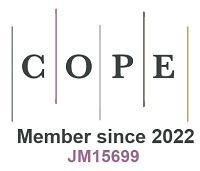REFERENCES
1. Comer BM, Fuentes P, Dimkpa CO, et al. Prospects and challenges for solar fertilizers. Joule 2019;3:1578-605.
3. Licht S, Cui B, Wang B, Li FF, Lau J, Liu S. Ammonia synthesis. Ammonia synthesis by N2 and steam electrolysis in molten hydroxide suspensions of nanoscale Fe2O3. Science 2014;345:637-40.
4. Qian J, An Q, Fortunelli A, Nielsen RJ, Goddard WA 3rd. Reaction mechanism and kinetics for ammonia synthesis on the Fe(111) surface. J Am Chem Soc 2018;140:6288-97.
5. Guo W, Zhang K, Liang Z, Zou R, Xu Q. Electrochemical nitrogen fixation and utilization: theories, advanced catalyst materials and system design. Chem Soc Rev 2019;48:5658-716.
6. Suryanto BHR, Du H, Wang D, Chen J, Simonov AN, Macfarlane DR. Challenges and prospects in the catalysis of electroreduction of nitrogen to ammonia. Nat Catal 2019;2:290-6.
7. Niu L, Wang D, Xu K, et al. Tuning the performance of nitrogen reduction reaction by balancing the reactivity of N2 and the desorption of NH3. Nano Res 2021;14:4093-9.
8. Pang Y, Su C, Jia G, Xu L, Shao Z. Emerging two-dimensional nanomaterials for electrochemical nitrogen reduction. Chem Soc Rev 2021;50:12744-87.
9. Yang Z, Wang J, Wang J, et al. 2D WO3-x nanosheet with rich oxygen vacancies for efficient visible-light-driven photocatalytic nitrogen fixation. Langmuir 2022;38:1178-87.
10. Giuffredi G, Asset T, Liu Y, Atanassov P, Di Fonzo F. Transition metal chalcogenides as a versatile and tunable platform for catalytic CO2 and N2 electroreduction. ACS Mater Au 2021;1:6-36.
11. Wu T, Melander MM, Honkala K. Coadsorption of NRR and HER intermediates determines the performance of Ru-N4 toward electrocatalytic N2 reduction. ACS Catal 2022;12:2505-12.
12. Majumder M, Saini H, Dědek I, et al. Rational design of graphene derivatives for electrochemical reduction of nitrogen to ammonia. ACS Nano 2021;15:17275-98.
13. Lee CH, Pahari S, Sitapure N, Barteau MA, Kwon JS. DFT–kMC analysis for identifying novel bimetallic electrocatalysts for enhanced NRR Performance by suppressing her at ambient conditions via active-site separation. ACS Catal 2022;12:15609-17.
14. Wang Y, Su H, He Y, et al. Advanced electrocatalysts with single-metal-atom active sites. Chem Rev 2020;120:12217-314.
15. Li X, Liu L, Ren X, Gao J, Huang Y, Liu B. Microenvironment modulation of single-atom catalysts and their roles in electrochemical energy conversion. Sci Adv 2020:6.
16. Li L, Chang X, Lin X, Zhao ZJ, Gong J. Theoretical insights into single-atom catalysts. Chem Soc Rev 2020;49:8156-78.
17. Hu S, Tian N, Li M, et al. Trapezohedral platinum nanocrystals with high-index facets for high-performance hydrazine electrooxidation. Chem Synth 2023;3:4.
18. Kaiser SK, Chen Z, Faust Akl D, Mitchell S, Pérez-Ramírez J. Single-atom catalysts across the periodic table. Chem Rev 2020;120:11703-809.
19. Kim J, Choi S, Cho J, Kim SY, Jang HW. Toward multicomponent single-atom catalysis for efficient electrochemical energy conversion. ACS Mater Au 2022;2:1-20.
20. Novoselov KS, Geim AK, Morozov SV, et al. Electric field effect in atomically thin carbon films. Science 2004;306:666-9.
21. Stoller MD, Park S, Zhu Y, An J, Ruoff RS. Graphene-based ultracapacitors. Nano Lett 2008;8:3498-502.
22. Tan C, Cao X, Wu XJ, et al. Recent advances in ultrathin two-dimensional nanomaterials. Chem Rev 2017;117:6225-331.
23. Zhuo HY, Zhang X, Liang JX, Yu Q, Xiao H, Li J. Theoretical understandings of graphene-based metal single-atom catalysts: stability and catalytic performance. Chem Rev 2020;120:12315-41.
24. Liu P, Nørskov JK. Ligand and ensemble effects in adsorption on alloy surfaces. Phys Chem Chem Phys 2001;3:3814-8.
25. Li X, Shen P, Luo Y, et al. PdFe single-atom alloy metallene for N2 electroreduction. Angew Chem Int Ed Engl 2022;61:e202205923.
26. Ren G, Shi M, Liu S, Li Z, Zhang Z, Meng X. Molecular-level insight into photocatalytic reduction of N2 over Ruthenium single atom modified TiO2 by electronic Metal-support interaction. J Chem Eng 2023;454:140158.
27. Zhang A, Liang YX, Zhang H, Geng ZG, Zeng J. Doping regulation in transition metal compounds for electrocatalysis. Chem Soc Rev 2021; 50:9817-9844.
28. Vineesh TV, Kumar MP, Takahashi C, et al. Bifunctional electrocatalytic activity of boron-doped graphene derived from boron carbide. Adv Energy Mater 2015;5:1500658.
29. Yu X, Han P, Wei Z, et al. Boron-doped graphene for electrocatalytic N2 reduction. Joule 2018;2:1610-22.
30. Kresse G, Furthmüller J. Efficiency of ab-initio total energy calculations for metals and semiconductors using a plane-wave basis set. Comput Mater Sci 1996;6:15-50.
31. Kresse G, Furthmüller J. Efficient iterative schemes for ab initio total-energy calculations using a plane-wave basis set. Phys Rev B Condens Matter 1996;54:11169-86.
33. Perdew JP, Chevary JA, Vosko SH, et al. Atoms, molecules, solids, and surfaces: Applications of the generalized gradient approximation for exchange and correlation. Phys Rev B Condens Matter 1992;46:6671-87.
34. Perdew JP, Wang Y. Accurate and simple analytic representation of the electron-gas correlation energy. Phys Rev B Condens Matter 1992;45:13244-9.
35. Yang WJ, Ren JN, Zhang HW, et al. Single-atom iron as a promising low-temperature catalyst for selective catalytic reduction of NOx with NH3: a theoretical prediction. Fuel 2021;302:121041.
36. Yang W, Zhao M, Ding X, et al. The effect of coordination environment on the kinetic and thermodynamic stability of single-atom iron catalysts. Phys Chem Chem Phys 2020;22:3983-9.
37. Yang W, Xu S, Ma K, et al. Geometric structures, electronic characteristics, stabilities, catalytic activities, and descriptors of graphene-based single-atom catalysts. NMS 2020;2:120-31.
38. Grimme S, Antony J, Ehrlich S, Krieg H. A consistent and accurate ab initio parametrization of density functional dispersion correction (DFT-D) for the 94 elements H-Pu. J Chem Phys 2010;132:154104.
39. Gray CM, Saravanan K, Wang G, Keith JA. Quantifying solvation energies at solid/liquid interfaces using continuum solvation methods. Mol Simul 2017;43:420-7.
40. Nelson R, Ertural C, George J, Deringer VL, Hautier G, Dronskowski R. LOBSTER: Local orbital projections, atomic charges, and chemical-bonding analysis from projector-augmented-wave-based density-functional theory. J Comput Chem 2020;41:1931-40.
41. Nørskov JK, Bligaard T, Logadottir A, et al. Trends in the exchange current for hydrogen evolution. J Electrochem Soc 2005;152:J23.
42. Wang V, Xu N, Liu J, Tang G, Geng W. VASPKIT: A user-friendly interface facilitating high-throughput computing and analysis using VASP code. Comput Phys Commun 2021;267:108033.
43. Shi L, Bi S, Qi Y, et al. Anchoring mo single-atom sites on B/N codoped porous carbon nanotubes for electrochemical reduction of N2 to NH3. ACS Catal 2022;12:7655-63.
44. Fan M, Chen X, Zhang M, Cui L, He X, Zou X. Highly dispersed Ru nanoclusters anchored on B,N co-doped carbon nanotubes for water splitting. Inorg Chem Front 2022;9:968-76.
45. Niu H, Wang X, Shao C, Zhang Z, Guo Y. Computational screening single-atom catalysts supported on g-CN for N2 reduction: high activity and selectivity. ACS Sustainable Chem Eng 2020;8:13749-58.
46. Choi C, Back S, Kim N, Lim J, Kim Y, Jung Y. Suppression of hydrogen evolution reaction in electrochemical N2 reduction using single-atom catalysts: a computational guideline. ACS Catal 2018;8:7517-25.
47. Lv X, Wei W, Huang B, Dai Y, Frauenheim T. High-throughput screening of synergistic transition metal dual-atom catalysts for efficient nitrogen fixation. Nano Lett 2021;21:1871-8.
48. Shi L, Yin Y, Wang S, Sun H. Rational catalyst design for N2 reduction under ambient conditions: strategies toward enhanced conversion efficiency. ACS Catal 2020;10:6870-99.
49. Jiao D, Liu Y, Cai Q, Zhao J. Coordination tunes the activity and selectivity of the nitrogen reduction reaction on single-atom iron catalysts: a computational study. J Mater Chem A 2021;9:1240-51.
50. Liu S, Cheng Z, Liu Y, et al. Boosting electrochemical nitrogen reduction reaction performance of two-dimensional Mo porphyrin monolayers
51. Jin H, Guo C, Liu X, et al. Emerging two-dimensional nanomaterials for electrocatalysis. Chem Rev 2018;118:6337-408.
52. Katsounaros I, Figueiredo MC, Chen X, Calle-vallejo F, Koper MTM. Structure- and coverage-sensitive mechanism of NO reduction on platinum electrodes. ACS Catal 2017;7:4660-7.
53. Chun H, Apaja V, Clayborne A, Honkala K, Greeley J. Atomistic insights into nitrogen-cycle electrochemistry: a combined DFT and kinetic monte carlo analysis of NO electrochemical reduction on Pt(100). ACS Catal 2017;7:3869-82.
54. Ma F, Jiao Y, Gao G, et al. Graphene-like two-dimensional ionic boron with double dirac cones at ambient condition. Nano Lett 2016;16:3022-8.
55. Zhang H, Li Y, Hou J, Tu K, Chen Z. FeB6 Monolayers: The graphene-like material with hypercoordinate transition metal. J Am Chem Soc 2016;138:5644-51.
56. Sun X, Zhang H, Wang S, et al. Tuning the coordination microenvironment to boost the electrocatalytic HER activity of M3(C6O3S3)2. J Phys Chem C 2022;126:16606-14.








